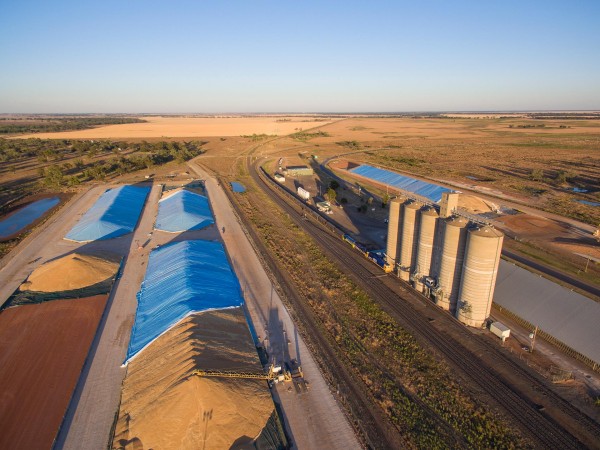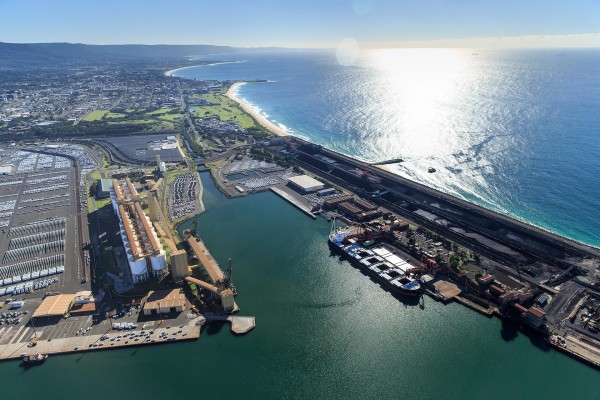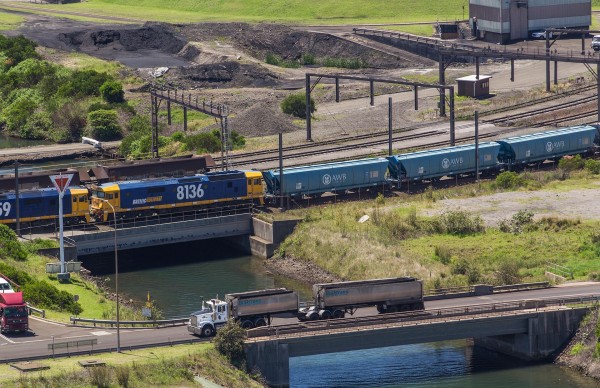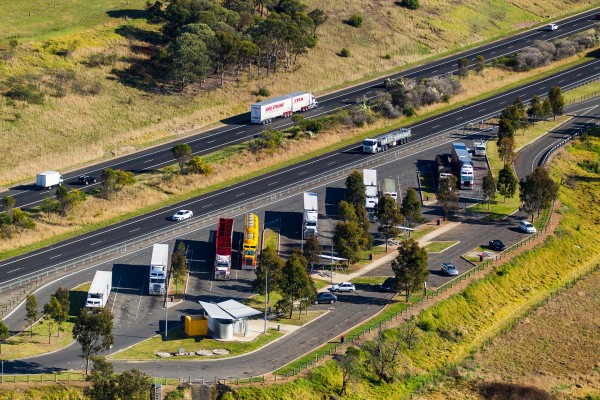Executive Summary – a plan for action 2018-2023
This Freight and Ports Plan sets the NSW Government’s priorities for the sector over the next five years.
In 2013, the NSW Government developed the Freight and Ports Strategy – the first strategy of its kind in NSW. The NSW Freight and Ports Plan 2018-2023 (the Plan) provides industry with the continuity and certainty it needs to make the long-term investments that benefit not only their businesses - but the State’s future growth and prosperity.
As a supporting plan to Future Transport, this Plan is central to the NSW Government’s long-term vision for transport in NSW. It aligns with the NSW Government’s state-wide land use and infrastructure plans - the NSW Regional Plans, Greater Sydney Commission District Plans and the State Infrastructure Strategy.
In developing this Plan, we consulted widely with industry, local councils and other stakeholders from mid-2017 to early 2018. The priorities in the Plan reflect the outcomes of this consultation (see Appendix).
What the Plan will achieve over the next five years
The Plan includes over 70 initiatives to be delivered by 2023 – ranging from infrastructure investment to trials of new technologies. These initiatives are focused on achieving five key objectives:
- Objective 1: Economic growth
- Objective 2: Efficiency, connectivity and access
- Objective 3: Capacity
- Objective 4: Safety
- Objective 5: Sustainability
Working across the supply chain
The success of the Plan relies on strong collaboration between the NSW Government, industry, the Australian Government, local councils and the community.
Objective 1: Economic growth
Providing confidence and certainty that encourages continued investment in the freight industry to support economic growth
Freight infrastructure investments have long pay back periods – this means industry needs certainty about NSW Government priorities so that they can be confident in their long-term investments.
Key actions we will take
- Enhance productivity by investing in freight infrastructure, and delivering and improving key freight programs and projects, including the Restart NSW funding which has been made available for Fixing Country Roads ($543 million) and Fixing Country Rail ($400 million)
- Make NSW a better place to do business by supporting continued reforms to ensure national harmonisation of laws and regulatory bodies, reviewing impediments to coastal shipping and removing red tape for road and rail operators in NSW to enhance productivity across the network
- Assist industry planning and decision making by sharing data with industry, improving data on rail freight and supporting national freight data initiatives.
Success means
Deliver over $5 billion of investment over five years, including Fixing Country Roads ($543 million) and Fixing Country Rail ($400 million) and other upgrades to road and rail infrastructure to boost freight capacity and efficiency.
Objective 2: Efficiency, connectivity and access
Improving the efficiency of existing infrastructure and ensuring greater connectivity and access along key freight routes
Given the significant cost of new infrastructure, the NSW Government and industry need to boost the performance and utilisation of the State’s existing roads, rail, ports, pipelines and airports.
Key actions we will take
- Improve safety and efficiency through trials of new technologies, such as drones, vehicle-to-infrastructure (V2I) systems and rail technology.
- Improve travel times and reliability through targeted congestion programs including Smart Motorways.
- Boost the efficiency of the rail network and trade gateways by facilitating new technology and improved co-ordination of Port Botany freight movements, working with the Australian Government to trial an outcome based approach to managing noise emissions from freight aircraft operating in the Sydney Airport curfew period and trialling high productivity trains for bulk freight movements to Port Kembla and Newcastle.
- Increase use of safer and more productive vehicles through implementing the NSW Heavy Vehicle Access Policy Framework which sets out networks for Performance Based Standards (PBS) vehicles across the whole of NSW (reducing the need for operators of PBS fleets to obtain permits) and assisting local councils to make access decisions.
- Manage growth and improve the efficiency of urban freight through encouraging deliveries outside peak periods and improving the planning of freight loading facilities in key urban centres, including off-street loading docks.
- Collaborate with the long-term lessees of the States’ major ports to support efficiency, access and capacity enhancements.
Success means
We will:
- ensure 90 per cent of peak travel on key road routes is on time
- increase the share of rail freight at Port Botany to 28 per cent by 2021
- increase the length of appropriate State Roads accessible by priority restricted access vehicles
- maintain train paths needed by freight within Greater Sydney’s shared rail network
Objective 3: Capacity
Maximising infrastructure investment and increasing infrastructure and land use capacity to accommodate growth
To address capacity constraints on the State’s freight network, the NSW Government will address road congestion, rail freight capacity and protect land needed for vital freight and logistics operations.
Key actions we will take
- Make capacity boosting investments in the rail freight network by improving the capacity of east-west movements through targeted improvements to the NSW rail network and supporting the Inland Rail Project.
- Improve the road network through projects targeted at supporting freight precincts, terminals and key freight routes, including the Pacific, Newell and Golden Highways.
- Protect land for freight and logistics by working with the Greater Sydney Commission and the Department of Planning and Environment to maintain, manage and plan employment lands across the Greater Sydney Region, helping local councils develop local strategic planning statements in response to District and Regional Plans, and implementing reforms to NSW planning policies and guidelines.
- Enable regional growth and the future operation of critical freight infrastructure such as the Western Sydney Airport through expansion of fuel pipelines.
Success means
We will achieve travel time reductions, reliability improvements and improved safety and environmental outcomes by delivering capacity building freight programs and more effective local planning for freight.
Objective 4: Safety
Creating a safe freight supply chain, involving safe networks, safe transport, safe speeds and safe people
As the State’s freight task grows, so too will the number freight vehicles. The NSW Government will continue with actions that make the transport network safer for everyone.
Key actions we will take
- Reduce fatalities and serious injuries from crashes involving heavy vehicles or light trucks by implementing the NSW Road Safety Plan 2021 and developing a rest stop framework to assist future decision making around the planning, provision and management of rest stops.
- Develop a Heavy Vehicle Safety Strategy in partnership with industry to improve safety, including by increasing the take up of safety technologies.
Success means
We will reduce fatalities and serious injuries from crashes involving a heavy vehicle or light truck by 30 per cent by 2021 (compared to average annual fatalities over 2001-2010).
This will support the Towards Zero vision of Future Transport, which aims to have a NSW transport network with zero trauma.
Objective 5: Sustainability
Developing a sustainable supply chain that delivers benefits to our environment and continued operations into the future
The freight sector can have a significant impact on the environment and communities through carbon emissions, air quality and noise. The NSW Government will work with industry to help manage these impacts and transition the sector to cleaner and quieter transport.
Key actions we will take
- Manage the noise impacts of rail freight by working with industry to deliver solutions to reduce noise from locomotives and wheel squeal, and continuing the treatment of affected houses under the Freight Noise Attenuation Program.
- Reduce emissions and health impacts of freight by supporting the use of electric vehicles, investigating options to improve accountability for environmental performance in the rail freight industry and advocating for stronger national vehicle emission standards. We will monitor and report on the average age of trucks registered in NSW as we implement initiatives to encourage safer, more productive and cleaner vehicles.
Success means
Supporting the NSW Government's commitment to an aspirational objective of achieving net-zero emissions by 2050.




